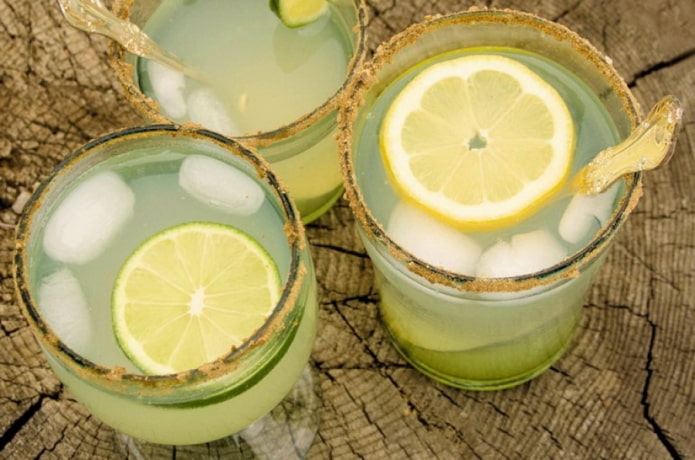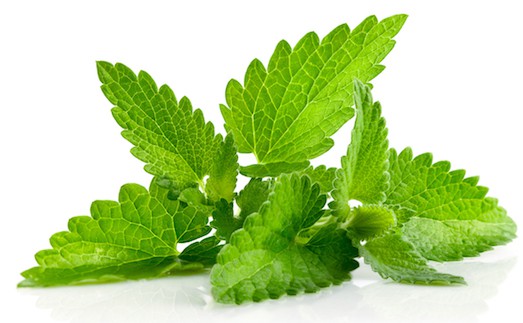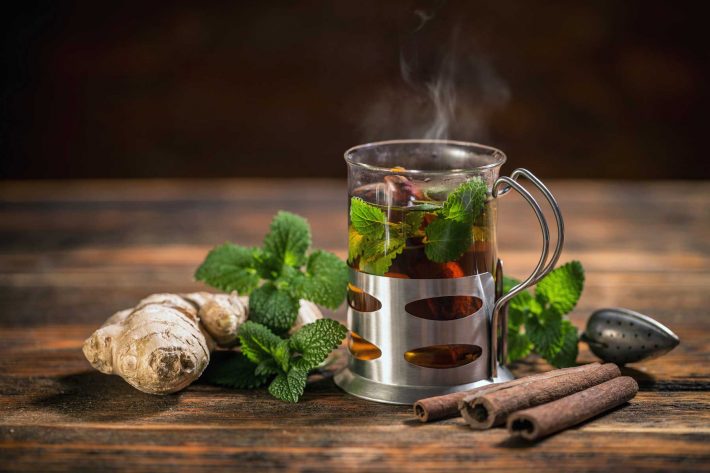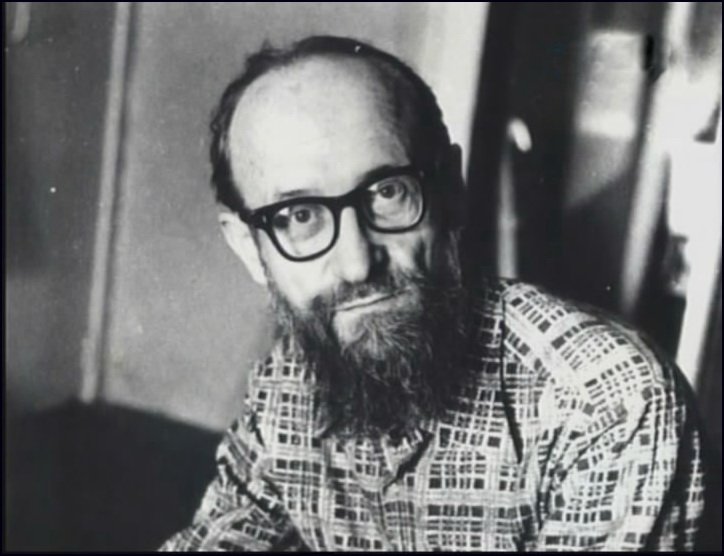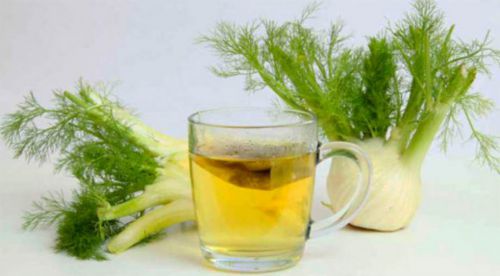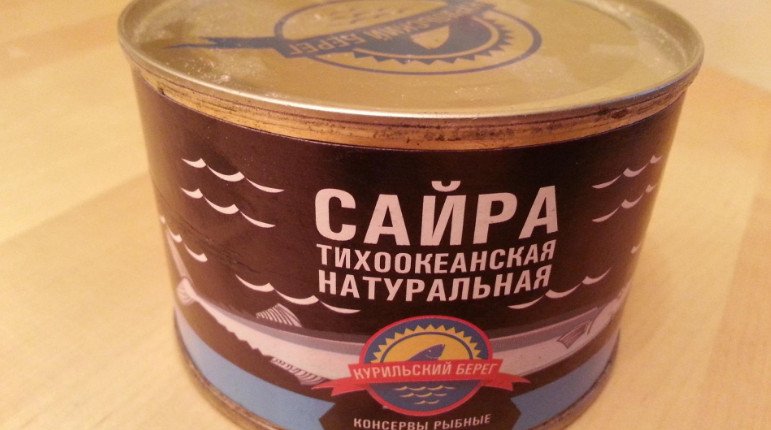Who invented alcohol: the story of the birth of wine and alcohol. When did vodka appear in Russia? History of the national drink
An interesting topic for many :). Who invented vodka?Where did she come from? How did its production begin? What kind of drink is it that is considered to be “primordially Russian” around the world and cannot imagine a real Russian person without a glass of vodka on the table?
The word "vodka" first appeared in the XIV-XV century, but then this word was called a strong infusion of berries, herbs or roots in strong alcohol. It is believed that a kind of vodka in the X century was first made by the Persian doctor Ar-Razion, they also say that the Arabs invented vodka, but since alcohol is forbidden in Muslim countries, they used it to produce perfumes and as a medicine.

The trade name "vodka" appeared in the USSR in 1936 with the adoption of GOST. The basis of vodka is rectified spirit, which is produced mainly from grain or potato raw materials. But the latter is used for the production of vodka in the EU countries, as well as in Belarus. In our country, vodka is produced only from grain raw materials.
In Europe, vodka appeared in the XIII century, but it was used as a medicine.
Vodka first appeared in Russia at the beginning of the 15th century. It was brought by the European ambassadors as a gift to Vasily the Dark as a medicine needed to lubricate wounds.

Vodka gained mass distribution later, under Ivan the Terrible. I will digress a little from the topic and tell you that before in Russia people did not drink strong alcoholic drinks, but only consumed light low-alcohol drinks, honey, beer, berry wine. The hostess prepared all these drinks at home and put them on the table only on big holidays.
Here is what Samuel Maskevich, a famous Polish traveler, wrote about Russia of that time:
“The Muscovites observe great sobriety, which is strictly demanded of both nobles and the people. Nowhere to buy neither wine nor beer. Others tried to hide barrels of wine, skillfully closing them in ovens. But there were found guilty. The drunk is immediately taken to the “labor prison”, purposely arranged for them, and only after a few weeks they are released from her, at the request of anyone. ”Seen in drunkenness is again sent to prison for a long time, then they are taken along the streets and mercilessly whipped until drunkenness freezes him.” Like this.

But Ivan the Terrible began to forcefully impose the tradition of drinking vodka, acting very brutally. Why did he do this? Thus, he wanted to replenish the treasury for the development of Siberian lands. And he considered this method the most effective. Having seen the so-called “taverns” in Kazan he conquered, he realized what benefit they could bring if the state monopoly on vodka was introduced.
People were dragged into these taverns by force, forced to drink vodka, which, moreover, was very expensive and completely unusual for a Russian. Home-made alcoholic beverages were banned under pain of death.
In general, sooner or later, Ivan IV got his way, Russia began to drink ... and the income of the royal treasury grew ...
However, the Russian people were not very keen on selling this drink. This occupation was considered shameful, the very last thing. And drunkards in Russia have always been despised ...
Since the advent of vodka in Russia, the moral decay of the people began, a disease such as alcohol dependence appeared. 
Rumor has it that D.I. Mendeleev allegedly invented vodka, and this is based on the fact that his doctoral dissertation is called "On the Compound of Alcohol with Water" But, it is known for certain that Mendeleev did not participate in the creation of vodka. In fact, his work relates to metrology.
And in 1885, sobriety societies began to appear in Russia. One of these societies was headed by L.N. Tolstoy. Here is what he wrote about drunkenness:
“An infectious disease is invading more and more people. Already drinking women, girls, children. It seems to both rich and poor that it is impossible to be cheerful otherwise than drunk or half-drunk, it seems that the best way to show your grief or joy is to be stupefied and, having lost human dignity, to become like an animal ... "
Interestingly, by the end of the 19th century, Russia occupied the penultimate place in the amount of alcohol consumed. We have more than half the population were teetotalers. Almost all women did not drink alcohol at all.

Comparison by countries the amount of alcohol consumed, XIX century.

And much later, during the Great Patriotic War in the Red Army, fighters participating in hostilities were given 100 grams of combat daily. However, this order was repeatedly changed, and in 1942 on May 12 an order was issued by the People's Commissar of Defense No. 0373. He read:
“To stop the daily issuance of the entire army of the army, to establish the order and rate of vodka distribution.”
In accordance with the order, the daily issuance of vodka was preserved only to front-line fighters who were successful in fighting against the Nazi invaders, and the norm was increased to 200 grams per person. For this purpose, vodka was allocated monthly at the disposal of the command of the fronts and individual armies in the amount of 20 percent of the number of troops of the front - the army. The remaining fighters relied 100 grams on revolutionary, social and regimental (day of formation of the unit) holidays.
Incidentally, this law was often used by foreign media to defame the Russian army. There were rumors of "drunk battalions", etc. fiction. Moreover, even in those days, alcohol consumption per capita in the USSR was much lower than in European countries.

And where did the name “vodka” come from? Opinions differ on this issue. Perhaps from the Polish language. Polish "Wodka" has the original meaning from "vodichka", which is similar to the old Russian word "vodka" - "vodichka". But there is also an opinion that “water” and “vodka” have different roots and therefore are in no way connected with each other.
In Russia, the word "vodka", also in the meaning of "alcoholic beverage" was first mentioned in 1533. The earliest Russian document where we can find the word “vodka” is Ivan IV’s decree “On the collection of duties exported from the sea by different wines and vodkas by yefimki, and with sugar, according to previous decrees,” dated August 4, 1683. But for a long time, vodka was called “hot, simple, table wine”, “penny”, “half a cup” and “moonshine” in state acts and statements.
But the tradition of drinking vodka in Russia was not always implanted, sometimes alcohol was banned, introducing the so-called “dry law”. For example, in 1914 at the beginning of the First World War. And the Bolsheviks, who came to power in 1917, extended it until 1924. Or, for example, during the reign of Gorbachev, a “dry law” was also adopted. There were even so-called “sober Komsomol” weddings, where alcohol was allegedly absent. In fact, there was alcohol on the tables, but not in bottles, but in samovars, teapots, in general, our people are resourceful. And the famous vodka coupons?
And in 1936 GOST was adopted, according to which the pure alcohol mixture was called "vodka". “Vodka” and “special vodka” appeared. The former are purely water-alcohol mixtures, while the latter have minor flavored additives.
And finally, in some Russian cities there are museums of vodka. For example, in Uglich, where in 1998 the Municipal Museum of the History of Russian Vodka was opened. It is known that Uglich Land is the birthplace of Pyotr Arsenievich Smirnov, the vodka king, the founder of the Trading House P. A. Smirnov in Moscow in 1860, and the supplier of the Supreme Court since 1866.
In 2003, its own museum of vodka was opened in Smolensk. There are their own "vodka museums" in Tyumen, Moscow and Amsterdam.
Curious fact: the most expensive vodka in the world is “Diva”, produced in Scotland. Its price ranges from 4000 thousand to 1 million dollars per bottle and depends on the jewelry on the bottle.
I also suggest watching an interesting video about the history of vodka and alcoholism in Russia:
Do not forget to share in the comments what you think about this issue.
Vodka has long been considered the national alcoholic beverage in Russia. It is not known exactly who and when came up with this drink. There are numerous versions of the origin of vodka, the main ones are presented in this article.
History of Vodka
It is believed that the Arabian doctor Pares invented vodka in 860 and used his invention only for medical purposes for rubbing and warming. Indeed, according to the Qur'an, drinking alcohol is prohibited. In addition to medicine, they began to use alcohol for the preparation of perfumes and eau de toilette. Although these data on the issue are not scientifically confirmed. It follows that the Arabs could not invent vodka, especially since they do not drink alcohol at all.
In Europe, for the first time, they started talking about vodka after the first distillation of a liquid containing sugar was made by the Italian alchemist Valentius. Subsequently, all the famous spirits were born, such as whiskey, brandy, cognac, schnapps.

Who invented vodka in Russia?
Some versions about the appearance of vodka in Russia
Historical documents indicate that from the period 1386-98, merchants of Genoa brought grape alcohol to Russia. It was used only as a medicine. At the beginning of the 15th century, alcohol was recognized as harmful, and it was forbidden to import it into the Moscow principality. It was at this time that Russian distillation began to emerge, that is, perhaps, the history of vodka originates precisely from the distillation of bread alcohol from rye raw materials. Perhaps it was the bread wine that later became vodka. Around the same time, vodka confronted other intoxicated drinks like beer and nourishing honey, which were approved by the Church. It was believed that the use of vodka will prevent various infectious diseases, since bread alcohol has disinfecting properties.

In Russia, vodka was called any liquid with a high percentage of strength. They didn’t like the Arabic name “alcohol”, they called alcoholic drinks wine, despite the fact that they have no connection with grapes. They also called that drink that could intoxicate a person.
Although these facts do not say exactly who invented vodka, many will be interested in this information. Many of the stories that have come down to our time are related to the Russian drink in a half-bar. This is a bread wine that was distilled to a fortress of 38.5 degrees. If a weak drink was obtained, then it was strengthened and called under-burn. From this came the name - bad breath - fume.
What does Mendeleev have to do with the invention of vodka?
The famous scientist has nothing to do with the invention of vodka, because vodka appeared even before he was born. Therefore, the version that Mendeleev invented vodka is erroneous.
In 1865, D. I. Mendeleev wrote and defended his doctoral dissertation on the subject “Compounds of alcohol with water” on the theory of solutions of alcohol and water. Some suggest that in his writings, a chemical scientist suggested that the alcohol content of vodka is 40 degrees - as an ideal amount in terms of drinking. Then it turns out that Mendeleev invented 40-degree vodka, but this is not at all the case.
According to existing information, which is available at the Museum of Vodka in St. Petersburg, the famous scientist believed that the ideal fortress of vodka is 38 degrees. Only then the value was rounded to 40 degrees to facilitate the calculation of income tax. Vodka was not at all of interest to Mendeleev, he was interested only in alcoholic compounds, so he has nothing to do with the question of who invented vodka. The scientist took some data for his dissertation from the earlier works of the Englishman J. Gilpin. As you know, even before scientific research people drank vodka, it was just that the alcohol content in it was not regulated, but especially at the state level.

The emergence of vodka in Russia
Since 1533, a state monopoly on the production of vodka and sale in “sovereign taverns” was introduced in Russia. The term “vodka” itself was officially fixed in 1751 by Elizabeth II. At the turn of the 18th century, a chemist from St. Petersburg, Lovitz, proposed using charcoal to clean fusel oils in vodka. It was sold in Tsarist Russia only in specialized wine shops. At one time, only 2 types of vodka were sold there: Krasnogolovka and Belogolovka, respectively, with a white and red lid. The first vodka, the price of which was 40 kopecks, was sold in 0.61 liter bottles. A "Belogolovka" double cleaning cost 60 cents. Also sold bottles with a capacity of ¼ bucket, that is, 3 liters in special wicker baskets. The smallest bottle of vodka was 0, 061 liters and it cost only 6 cents.
A little later, the name “Moscow Vodka” arose and was firmly entrenched. A patent for it was obtained in 1894. The vodka contained 40 parts by weight of ethyl alcohol, and it should have been purified using a charcoal filter. Officially registered producers of vodka appeared a little later, it is clear that they practically have nothing to do with whoever invented vodka, they just made it. This company was called "Peter Smirnov", it produced vodka "Smirnovskaya".

The advent of modern vodka
In the 19th century, the mass production of ethyl alcohol began, which was necessary for the chemical, perfumery industry and, of course, official medicine. A special apparatus was created, which on a large scale produced alcohol with a high degree of purification from essential and fusel oils, its strength was 96 degrees.
The state monopoly on the production of vodka was returned, it spread throughout the country. There are a great many types of modern vodka, and now few people ask who invented vodka in Russia. The answer to this question will remain open. In 1936, the Soviet government issued a special GOST, according to which the alcohol solution was called vodka, and what was produced before the revolution was called vodka products. Since about the 50s, the term "vodka" has become international.

Unusual types of vodka
The only black vodka in the world is produced in the UK. It differs from the usual one only in color. The strongest vodka belongs to Scottish producers, its strength is 88.8 degrees. This vodka, the price of which is about $ 140 per bottle, is especially popular in China, where the number 8 is considered lucky.
The most expensive vodka is produced in the same Scotland. The made drink passes a complex filtration system from charcoal of Karelian birch and diamond chips. The price of a bottle depends on the size and quality of the stones, the cost varies from 5 to 100,000 dollars.
Historians have not been able to reliably establish who invented vodka. Most likely, she appeared in a small village and, after the lapse of time, spread throughout the world. The creator of this alcoholic drink was not a famous person at all and therefore did not leave any traces in history. But, in spite of everything, vodka is considered a national Russian drink.
Many foreigners associate vodka with Russia, is it really a national drink? Who ever came up with vodka? This question may interest many.
It is known that even in the Middle Ages, conducting various experiments, in Europe discovered alcohol, which is associated with alchemists. But regarding vodka, many believe that it was invented in Russia.
Indeed, another famous chemist Dmitry Mendeleev came up with the ideal ratio of water to alcohol - 40% to 60%. Does this mean that he came up with vodka?
No one knows how humanity discovered alcohol. Archaeologists have found that the Papuans of new Guinea still could not light a fire, but already knew how to make intoxicating drinks. The earliest graphic references to wines were recorded in the 4th millennium BC. e. Shards of vessels made of clay with the remnants of wine traces on them date back to an even earlier period. But, strong drinks in those days were not invented yet.
The distillation of liquids was first described by the greatest philosopher of Ancient Greece - Aristotle, born in 384 BC. e. It must be thought that similar experiments on the extraction of alcohol were carried out earlier, there is simply no documentary evidence of this.
The first drink resembling vodka was invented by a Persian doctor Ar-Razi. The distillation of alcohol-containing elements revealed ethyl alcohol. This gave rise to the occurrence of alcoholic beverages.
But the Arabs did not take alcohol inside, it was used as medical and cosmetic means.
Reference! In what year did vodka invented? It is believed that the Arab doctor invented an alcohol-based drink in 860 - they used it then only for medical purposes.
In the Middle Ages, alchemists developed and improved various techniques and methods for distilling fermenting raw materials into the “soul of wine”. Whoever first invented alcohol will probably remain a mystery to humanity forever.
Insoluble dispute of scientists
Italians invented a distillation apparatus in the 9th century. Around the same time, the secret to obtaining spiritus vinium was discovered by scientists in other countries. The doctor, scientist, alchemist - the Frenchman Arno de Willger, became the ancestor of the extraction of wine alcohol in Europe, he managed to separate alcohol from fermenting raw materials. The idea was picked up by the monks of France, and then Italy. In 1360, a rare church economy did not actively trade in “water of life”.
Poles literally invented vodka. Then they called the drink bread wine and used as a medicinal tincture. It was back in the Middle Ages. All adult citizens of the country could produce and sell such vodka. The word itself also came from the Polish language, which means “water”, Wikipedia also mentions this.

In the 16th century, Tsar Ivan the Terrible ordered to secure a monopoly on the production of this drink by the boyars.
But the myth about the origin of vodka arose during the Soviet Union, when the then-famous culinary specialist, William Pokhlebkin, published the book “The History of Vodka”. It says that a drink appeared in Moscow when Russia was under the yoke of the Golden Horde. Many researchers argued about who invented vodka. Fierce discussions continue today. Wikipedia, for example, displays the conflict between Pokhlebkin and Pidzhakov. The latter, as evidence of a false theory of a scientific researcher, refers to the absence of any direct documents confirming this fact. There is no historical evidence that unambiguously answers who invented vodka and when exactly the discovery was made. Many professors and amateurs are still trying to find the answer to this question.

There is no authentic data on this fact, therefore the version is classified as false. But in the minds of many people the idea was fixed that vodka appeared on the Russian land.
A little about the product
Vodka in its composition has the following components:
- Water - the main component;
- Ethanol;
- Methyl alcohol - a dangerous component, but it is contained in small doses even in the best grades of alcohol;
- Fusel oils - their presence indicates a low quality product.
The taste of classic vodka is characterized as burning and bitter. In some species, various flavors are added to soften the water-alcohol composition. It can be peppers, cinnamon, chocolate (sugar free), vanilla, etc.
Reference! What is classic vodka made from? The raw materials for it are potatoes or cereals, purified water.
Many Russian poets and writers sang vodka, for example, Vladimir Mayakovsky wrote: "It is better to die from vodka than from boredom!"
Aurelius Markov owns the words: "A bottle of excellent vodka well replaces knowledge of foreign languages."
The advent of alcohol-based alcoholic beverage in Russia
A prototype of vodka was brought to Russia in the 14th century, when a merchant from Genoa delivered Aqua Vitae or Living Water. It was back in 1386.
Alchemists from the Provence region by that time had learned to turn grape must into alcohol like the Arabian distillation cube.
Reference!"Alcohol" in translation from Latin means spirit. In Russia, vodka was called bread wine, as it was made from cereals of wheat, rye, barley.
Despite the fact that the concept of vodka in Russia already existed, it was only in the USSR that it sounded the trade name of this drink. This happened in 1936 according to GOST.

The rectified spirit made from raw materials based on grain or potatoes was taken as the basis. Subsequently, vodka began to be produced in Russia only on the basis of grain crops.
The mass planting of vodka began to be carried out during the time of Ivan the Terrible, this was done to replenish the royal treasury. Sometimes people were forced to buy this drink, and it cost, by the way, not cheap.
Before the distribution of vodka, Russian people did not drink strong strong drinks, preferring:
- mead,
- weak berry wines,
- beer.
Ivan IV banned the manufacture of alcoholic beverages at home under pain of death.

As a result, the king’s treasury was replenished, but for a long time people considered the occupation of selling vodka a shame, and they did not respect drunks. But gradually, Russian society began to decompose. There was such a thing as an alcoholic.
Reference. Many have heard about the concept of "Royal Vodka." But you can’t drink it. The composition includes hydrochloric and nitric acid. Their goal is the dissolution of gold. The liquid has no color, later the solution becomes an orange tint.
There are many interesting facts in history regarding this popular drink in Russia. To learn more about him, you can visit the Museum of the History of Vodka, located in Moscow.

Here the history of this drink is highlighted for 500 years, 600 types of vodka are presented, other exhibits associated with it. Such museums, but with fewer exhibition samples, are open to visitors in Uglich (RF), St. Petersburg, Amsterdam, Kharkov.
The veracity of the expression "drink in buckets"
Popular expression "Drink vodka in buckets" has a historical meaning. Since in the time of Catherine II this drink was sold in buckets of 12.3 liters.
Back in 1533, the first institution was opened, where you could skip a couple of glasses of strong drink, by the way, vodka was sold there as an elite drink. Bottled vodka began to be sold later in 1894.
Fine wineglass
Where did the concept of free vodka come from? It turns out in ancient Greece, and this is still in the 4th-5th centuries BC. residents loved to have banquets.

The number of dishes and drinks was not limited, but there were certain etiquette rules, according to which a person who was late for a feast had to pay a fine.
Patent for sale
In 1894, the government in Russia opened a patent for the sale of domestic drink called "Moscow special", where 40 parts of the weight of ethyl alcohol were carried out through coal filtration.
This drink has become russian national stamp.
Health toast
The concept of “toast for health” appeared during the time of Ivan the Terrible, when various medicinal tinctures were made on alcohol, which were based on berries and herbs.
Reference! Such strong drinks were taken only for medicinal purposes.
Medal for Drunkenness
The heaviest award in the World was the Medal for Drunkenness, which was established by Peter I. It was in 1714.

So the king came up with a panacea for alcoholism.
- The emphasis was on the inscription, which informed everyone around about the status of the drunkard and the weight of the award.
- Given the collar and medals, this insignia weighed 8 kilograms.
- "Awarding" was carried out by the police. The medal was attached to the neck in such a way that it could not be removed.
- A person had to go through a week with a similar label, this was enough to realize their actions.
About Mendeleev
The creation of vodka is associated with the Russian chemist Dmitry Ivanovich Mendeleev.
Reference! Indeed, he submitted to the court of his fellow scientists a dissertation entitled “On the Connection of Alcohol with Water”. But the work of its relationship to vodka and the establishment of a fortress in 40% does not have.
Until 1886, the standard fortress of this alcohol-containing drink was established in Russia as 38.3%. But since it was also envisaged to “shrink” the vodka so that it guaranteed 38 degrees, it was decided to round this number to 40%.

D. I. Mendeleev himself took the concept of metrology as the basis of his work, and not the goal of creating an alcoholic beverage.
Health Watch
Allergy to alcohol. A diagnosis that sounds like a curse. If gluten is recognized as an undesirable component of the body, there is hope for salvation. Today, many world producers of vodka, knowing about the number of people with aversion to protein from cereal grains, produce alternative options. What is vodka made from? Alcohol is extracted from potatoes, grapes, and fruits.
According to the regulations of the European Union, any plant crops are considered acceptable for the production of vodka.
No alcohol law
Even under M. S. Gorbachev the prohibition was introduced. But it turns out that in Russia this was done several times.
The first stage took place in 1914. With the Bolsheviks coming to power, a number of laws were also passed regarding the reduction of vodka production.
The next ban was introduced in 1960. Since that time, moonshines and other surrogates produced underground have become popular.

Ban sales in the regions
Currently, some regions of Russia have their own rules regarding alcoholic beverages.
- So, for example, in the Ulyanovsk region alcohol is not sold on Saturday and Sunday, and also every day after 20:00.
- Dagestan has legislation to prohibit the sale of alcohol on certain holidays.
- Yakutia went even further, they don’t sell alcohol here, from 20:00 until 14:00 the next day.
Consumption and supply culture
Slavic peoples most often drink pure vodka, Europeans and Americans usually use strong alcohol for making cocktails. The most delicious, revealing its own specific, burning bouquet, will be vodka, chilled to 7-10 °. It is bottled in glasses containing no more than 50 grams. It is not customary to add water to alcohol, vodka is considered completely ready for use. For the same reason, ice is not put in it.

Drinking vodka is not a sign of bad taste or a violation of alcohol ethics. A good option for this is alkaline mineral water. It reduces the concentration of alcohol in the blood, prevents severe intoxication. Next are vegetable and fruit juices, brines, compotes. Due to the carbon dioxide content, sweet carbonated drinks accelerate the absorption of alcohol. The punishment for betraying vodka and drinking other drinks after it will be a painful hangover. In extreme cases, it is drunk after weaker foods: wine, liquor, but not vice versa.
Good vodka is a noble drink. Do not drink it hastily, the varieties are distinguished by aromas, taste, pungency. If a decent snack is not supposed to be eaten, it is advisable to eat tightly on the eve. Fatty, hearty dishes weaken the intoxicating effect of vodka and allow you to drink it with pleasure, without fear, suddenly go into oblivion.
What is served with vodka for a snack?
You can talk about it for a long time, but many people like to just drink it. But, everything is good in moderation. And yet, a special snack is needed for vodka. The famous Leopold Staff jokingly said:
“Vodka should be drunk only in two cases: when there is a snack, and when it is not. But it's better to have this strong drink. ”
It used to be that these should be various dishes, such as sausages, caviar, sturgeon, salmon, pickled mushrooms, dumplings or pancakes.

In later times, not so satisfying, people were content as a snack with pickles, green onions, boiled potatoes.
She is good with first courses: home-made noodles on chicken stock, red borsch, soups, and fish soup. It is not customary to put vodka on the table at the same time as:
- melon
- sweet dishes, chocolate.
- watermelon;
From a health point of view, fried fatty meats, hot peppers, horseradish, adjika do not go well with alcohol. These products additionally load the digestive system and the liver, "distracting" them from neutralizing alcohol in the blood. Canned vegetables with vinegar (pickled), unlike salted counterparts, create an extra stressful situation for the kidneys.
Watch a video about who actually invented vodka:
Who invented vodka?
There is no idea, supported by credible sources, that the first vodka was made by the Arab doctor Pares in 860 and was allegedly used for medical purposes. This statement does not seem convincing, if only because in the Arabic language the letter “p” is missing, and the Arabic name “Pares” simply does not exist.
In Europe, the first distillation of sugar-containing liquids was done by the Italian monk-alchemist Valentius.
Vodka appeared in Russia at the end of the 14th century. In 1386, the Genoese embassy brought the first vodka to Moscow (“Aqua Vitae” - “living water”). The alchemists of Provence adapted the distillation cube invented by the Arabs to turn grape must into alcohol. The Koran forbids Muslims from consuming any alcohol, so the Arabs used alcohol to make perfumes. In Europe, all modern strong drinks were born from Aquavita: brandy, cognac, whiskey, schnapps and Russian vodka. The amazement at the meeting with an unknown product was so great that it was given the name alcohol (Latin for “spiritus” is spirit). In Russia, vodka began to be called “bread wine” and was produced from plants of the cereal family: rye, wheat or barley.
According to legend, around 1430, the monk Isidore from the Chudov Monastery, located on the territory of the Moscow Kremlin, created the recipe for the first Russian vodka. Having a suitable education and possessing distillery equipment, he became the author of a qualitatively new alcoholic drink.
In 1533, a state monopoly was introduced on the production of vodka and sale in “royal taverns”. The official term “vodka”, established by law, first appears only in the Decree of Elizabeth I “Who is allowed to have cubes for the movement of vodka”, published on June 8, 1751. Then this term appears almost 150 years later, at the turn of the 19th and 20th centuries, in connection with the introduction of the state monopoly on the production and trade of vodka. In 1789, St. Petersburg chemist Toviy Lovits proposed the use of charcoal to clean vodka from fusel oils.
On January 31, 1865, Dmitry Mendeleev defended his doctoral dissertation “On the Compound of Alcohol with Water,” devoted to the theory of solutions based on studies of an aqueous solution of alcohol. Opinions on the conclusions of this dissertation differ. Some believe that in this dissertation D.I. Mendeleev suggested that the alcohol content in vodka is 40 °, as ideal from the point of view of drinking. According to the Vodka Museum in St. Petersburg, Mendeleev considered 38 ° to be the ideal vodka fortress, but this number was rounded to 40 to simplify the calculation of the alcohol tax. However, according to I. S. Dmitriev, director of the museum archive D. I. Mendeleev at Leningrad State University, Mendeleev was not at all interested in the concentration of alcohol solutions characteristic of vodka and did not try to determine the optimal strength of vodka. The data on this concentration range in his dissertation were taken from the earlier work of the English chemist J. Gilpin. Mendeleev himself studied solutions of higher concentrations. He also did not find any special physicochemical properties in ethanol solutions with this concentration and did not separate them in any way. Moreover, Mendeleev did not drink vodka, but preferred dry wine. His statement about vodka, as a source of funds for the state treasury, is known: “Is it really that our situation is such that in a tavern, public or private, should see salvation for the economic life of the people, that is, Russia, and in vodka, yes in the ways of its consumption to seek an outcome to improve the current state of affairs of the people and the state. ”
In 1894, the Russian government patented vodka, containing 40 parts by weight of ethyl alcohol and passed through a charcoal filter, as Russian national vodka called Moscow Special.
Everyone knows probably what vodka is, but the history of its appearance on the territory of Eastern Europe and the subsequent evolution to the form in which it is now known is more reminiscent of a collection of myths and legends than reliable historical facts.
About who and when he came up with vodka, there are many versions, one of the most common that it is supposedly the work of D. I. Mendeleev, but this is not so, and to refute this theory there are many significant historical facts, but more about that more details later.
The prototype and the first mention
Before starting the story of where and when vodka appeared in Russia, it must be said that the word itself is derived from the word water according to the same principle as the now rarely used forms of words mom and dad - mom and folder. Thus, the name itself does not have an initial binding to alcohol based on cereals or potatoes, but is associated with water.
But if we consider the historically developed product obtained by distilling mash on the basis of such raw materials, then the bread’s wine, it’s also “bread spirit”, can be considered the progenitor of vodka in Eastern Europe, “bread vodka” is very close to it nowadays. .

This alcoholic drink appeared approximately between the second half of the 14th and the first half of the 15th centuries; until that moment, alcohol based on cereals or their products by distillation in the territory of present-day Russia or neighboring states that were then a single state was not manufactured.
A possible reason for the creation of "bread wine" was the visit of the Genoese embassy in 1386. Together with them, Italians brought a very high-quality strong alcoholic drink with the name "Aqua Vitae", which literally translates as "water of life."

In terms of organoleptic properties, it significantly exceeded any type of alcoholic beverage available at that time — honey mead — or, which was connected with its production through complete distillation, which was open at that time in Italy.
If we talk about when vodka first appeared on earth as a water-alcohol solution obtained by distillation, then the Arabs already produced such a product in the 7th-8th centuries, but for medicinal purposes, and not for everyday use, which is prohibited by the Koran.
Origin
There are several versions, each of which has its own arguments and facts in its support, the main ones are the versions of Pokhlebkin and Pidzhakov.
Pokhlebkin's version
According to his calculations, based mainly on indirect indicators, professional distillation and vodka production appeared between the 1440s and 1470s, while the latest date, in his words, is 1478. As the main evidence of the beginning of mass production of alcohol, namely mass, according to Pokhlebkin, should be a criterion for the emergence of the industry, we can consider the introduction of specific taxation and the beginning of a state monopoly on this type of alcohol both within the state and in foreign trade. So, in 1474, a ban was introduced on the import and trade of "bread alcohol" for German merchants, which is reflected in the Pskov annals.

Pidzhakov's version
In his opinion, Pokhlebkin’s estimates are too optimistic and they don’t have direct confirmation in the annals. Thus, Pidzhakov comes to the conclusion that in the 15th century there was no distillation either in the territory of the Moscow kingdom or in the territory of the neighboring Lithuanian principality.
At the same time, he interprets the occurring word “digest” as referring to beer, and only the only mention of “created wine” in one of the non-mainstream historical documents can be regarded as a reference to vodka, that is, there was no mass distillation, perhaps there was an experimental single production.

The first reliable source indicating that the alcoholic beverage was produced in large volumes, in his opinion, is the “Treatise on the Two Sarmatians” by Matvey Mikhovsky from 1517. It says that the inhabitants of Muscovy "from oats ... make a burning liquid or alcohol and drink to escape ... from the cold." A later reference from 1525 indicates that "in Muscovy ... they drink beer and vodka, as we see it among the Germans and Poles."
The emergence of a 40 degree standard
In the period preceding the appearance of alcoholometers in the Russian Empire, the strength of “bread alcohol” was measured by means of an annealing procedure. If half burned out during the arson of a liquid, then such a drink was called a "half-burn." Her fortress corresponded to 38% and was the production standard, it was from here, and not from some research, that the "legendary" norm of an aqueous-alcoholic solution appeared.

In 1817, the “half-bar” strength of the drink became recommended, and in 1843, when the relevant law was passed, it became the official standard, but with a slight change, it was rounded to 40%. Firstly, in production it is much easier to mix the weight fractions of 4 to 6, rather than 38 to 62, and given the violation of the standards, a serious penalty was imposed, it was safer for manufacturers.
And secondly, the excise tax was taken from every degree, and it’s much more convenient to calculate round numbers, for which the Treasury has stood up. In addition, 2% of the supply was a guarantee that upon shrinkage, leakage or slight dilution, the consumer would still receive a drink with a “semi-solid” strength.
Thus, the historical statement of the strength of the water-alcohol solution, then called “table wine”, at the level of 40%, was accomplished, which was formalized in the “Charter on drinking taxes”, which was approved on December 6, 1886. In this case, the standard fixed only the lower limit, leaving at the discretion of the manufacturer the upper limit of the strength of the drink.
The emergence of modern recipes and production technology
With the beginning of the technical revolution in the second half of the 19th century, there was a need and an opportunity to produce alcohol in large quantities. First of all, the chemical industry, perfumery and medicine needed it. To this end, “rectification columns” were invented, which yielded not only much, but also better, the alcohol obtained had 96% and a high degree of purification. Such equipment appeared in the Russian Empire in the 1860s, while most of the rectification was exported.

At the same time, the distillery industry launched the production of “table wine”, which was a rectified solution in water and, in fact, was the prototype of a modern strong drink. If you ask who invented vodka from the point of view of modern composition, then it was a technical committee led by M. G. Kucherov and V. V. Verigo, who developed both the recipe and the production technology, which remains the standard to this day, and then the drink received the name "breech wine."
In 1914, the war began, and with it the Prohibition, which lasted even after the communists came to power until 1924. In 1936, already in the USSR, the standard of a water-alcohol solution was approved, which was essentially identical to the work of Kucherov and Verigo, and the drink was finally called vodka, and what was called "vodka" in imperial times was renamed into "vodka product".

Vodka and Mendeleev: truth and myths
In what form do myths that Mendeleev invented 40-degree vodka not circulate, for example, the well-known brand “” put on the label an inscription that the recipe of the drink meets the standard of 1894, in which Dmitry Ivanovich was supposedly the head of the tsar’s the commission that developed and approved this norm. The "actual" basis for such stories is the work of the great scientist, called "On the Connection of Alcohol with Water."

In this connection, he is considered the father of Russian vodka, although back in 1843 the 40-degree standard was set in the Russian Empire when Mendeleev was only nine years old. His dissertation also contains information mainly on aqueous solutions of alcohol of 70 degrees or more, more importantly, there are no experiments at all about the effects of alcohol on the body, its organoleptic properties or the ideal formula of an alcohol solution for internal consumption.
By nature, a scientist’s work is more relevant to metrics than to any other branch of knowledge. At the time of the introduction of the 40-degree norm, Dmitry Ivanovich studied at the gymnasium, which makes it impossible for him to participate in making such a historically significant decision. As for the mentioned vodka commission of 1894, this was formed, but in 1895, at the direction of S. Yu. Witte.
At the same time, Mendeleev himself participated in it, but not as a permanent member at the meetings, but at the very end, as a speaker, but on the topic of excise duty, and not on the composition of the drink.
Instead of an afterword
As with any sensitive topic, the story of the appearance of vodka is shrouded in many myths and legends, this is not due to someone's evil will who wants to mislead, but for the sake of embellishment, which is common to many of us.
Often the reality is more pragmatic and measured than in stories of miraculous insight or sudden discovery, which turns history into a series of boring and mostly mercantile evidence.

So “bread wine” appeared only due to the fact that the ruling layer saw the possibility of profit from a monopoly sale, and 40 degrees was a convenient rounding option that was offered by almost accountants.


